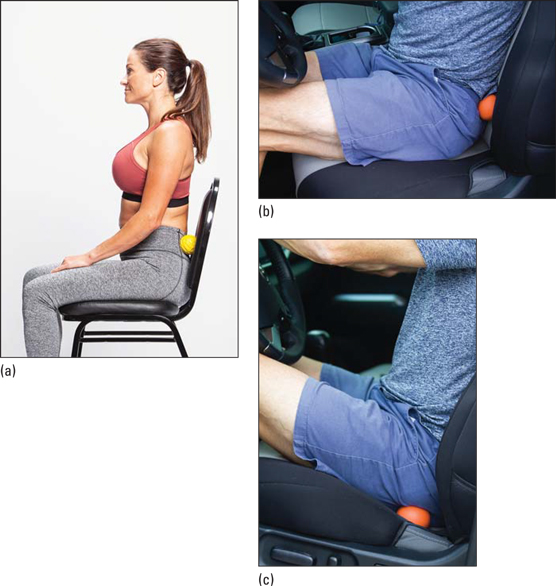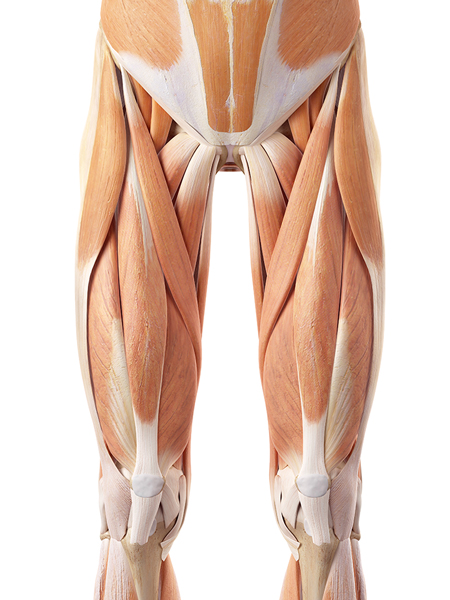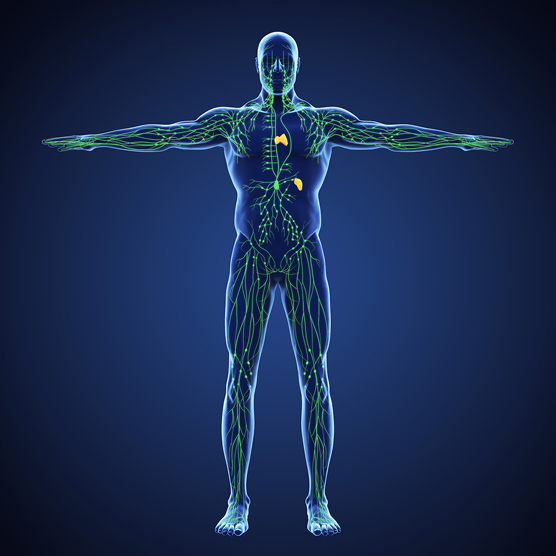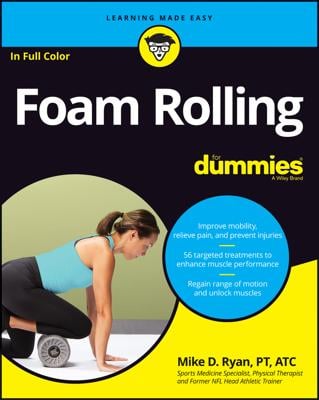There are so many factors when it comes to rolling: the type of roller, the size of the roller, the length of the treatment, the type of warming up for the roller, how you manage the pain of the treatment, and how you assess the benefits of the treatment. So, it only makes sense that the timing of the treatment is important as well.
There are times when a roller can be your BFF; Best Friend Forever. The roller timing issue is important because it will keep you safe while allowing you to optimize the many benefits of a roller. Simply stated: smart timing on a roller will help you decrease your risk and increase your results.
As you gain experience with different rollers and enhance your ability to truly listen to your body’s response to the rollers, you will start adjusting your personal timing and techniques with them.
When to foam roll
Rolling is just a part of our wellness plan. Most of us use a roller and stretching to enhance our body’s ability to move better with less effort. If we and the rollers do our job well, our muscles have more flexibility, our joints have more mobility, and our body has less pain.The quote, “If a little is good, a lot is better,” does not apply to rollers. Many rehabilitation tools and instruments used by physical therapists and athletic trainers can be overused if not properly scheduled. When it comes to mastering the art of successful roller rehab, the timing of when and how to use the roller is a mandatory skill.
Best times to roll
There are certain times when a roller will optimize your body’s ability to do its job. For example:- When your body feels stiff and tight, it’s a good time to use a roller.
- When you feel a knot or trigger point in a muscle, but you know this is not a new muscle strain, it’s a good time to use a roller.
- If you’re getting ready to start a physically demanding activity, such as exercising, working in the yard, playing with the kids, or carrying heavy luggage through an airport, it’s a good time to use a roller.
- When you’re in the middle of an activity, workday, workout, or project and a muscle knot or “creak” decides to make itself known in one of your muscles, it’s a good time to use a roller.
- After a hard endeavor when your muscles are ready for a well-earned nap, it’s a good time to use a roller.
- When you’re getting ready for bed and you want to relax your muscles so they can recover faster and more fully while you sleep, it’s a good time to use a roller.
Simply stated: if part of your body needs to be less bound down, needs to reduce its waste products, and needs to increase its supply of good, oxygen-rich blood, it’s a good time to use a roller.
A perfect time for a roller is before you plan to put a group of your muscles to work. You know that a relaxed muscle filled with a consistent inflow of healthy blood will perform better. A mobile, nourished, and strong muscle is a happy muscle.
We can never forget about our fascia, as shown in the figure below. A roller improves the mobility of the ever-active fascia throughout the body. When the tension on and from fascia is reduced, it instantly decreases the restrictive stress on all the tissue that the fascia encompasses. It’s similar to unraveling duct tape that is tightly wrapped around a thigh. All the tissue in the front, inside, back, and outside of the thigh is now free to move as it was designed to move. In addition to the muscles throughout the thigh, the blood vessels, lymphatic vessels, nerves, tendons, scar tissue, and the fascia itself have significantly more mobility. And, when it comes to these very important types of tissue, each of them can now do their jobs much more effectively. J.C. Guimberteau M.D/ENDOVIVO Video Productions
J.C. Guimberteau M.D/ENDOVIVO Video ProductionsInside look at fascia
Once again using the example of duct tape tightly wrapped around a thigh, imagine how difficult it is for blood to flow properly through fascia-restricted areas when exercising at a very high level. The nerves also become entrapped and sensitive because of the excess pressure. I often find nerve entrapments to be a common source of my patients’ chronic pain.
With all the previously noted benefits of rolling, it shouldn’t come as a surprise to learn that rolling is also a valuable tool for post-activity recovery.
Think about it this way: following a hard activity or busy day at work, your muscles need to rid themselves of all their toxins. They need to get the bad stuff out and the good stuff in. A roller is a perfect tool to improve the efficiency of the lymphatic system to drain off those toxins and waste products from the muscles and surrounding tissue.
Another roller-recovery benefit involves the circulatory system. Relaxing muscles and fascia will improve the body’s ability to pump fresh blood, rich with oxygen, water, electrolytes, and calories, to hungry muscles. Tight and bound-down muscles are more likely to cramp when they become dehydrated. We spend a considerable amount of our time, effort, and money maintaining a healthy diet and hydration plan. But if our muscles are too tight and restricted, we may be limiting our body’s ability to effectively transport those calories and fluids to our hard-working and hungry muscles.
Optimal times to rock and roll:
- Pre-morning coffee
- Post-morning coffee
- Pre-workout
- During workout breaks
- Long days at your desk (see figure A)
- During work breaks
- When you need a midday nap or a cold cup of water thrown in your face to wake you up, and neither one is an available option.
- During long car rides (see figure B and C)
- Post–long car rides
- Post-exercise
- While travelling
- While watching TV at home with your family
 Photography by Haim Ariav & Klara Cu
Photography by Haim Ariav & Klara CuRoller ball used for hip and low back pain when sitting
Pre-sleep rolling tips
I’m a big fan of using a roller before I go to bed. It helps me unwind from a busy day and removes tension and tightness in my spine and extremities. My pre-sleep rolling routine is my secret weapon to accelerate my recovery while I sleep. It allows me to wake up earlier and feel fresher for my daily pre-sunrise workouts.At the risk of sounding like a lunatic, I want you to take 1 minute to be super-creative with me. Imagine yourself living inside your thigh muscles (shown) — strange, I know, but stay with me. At the end of a long, busy day, you (thigh muscles) feel super-tight and bound down. You have lots of gunk and stagnant fluid just hanging around you. Minimal blood is moving in or out of you, because you’re all cinched down with yards of fascia wrapped around you and every muscle in your leg. You, the muscle, is now short and tight from sitting all day and you haven’t been stretched in nine or more hours! This sucks!
But after a quick roller treatment, the tight tension is gone, and you can finally breathe — you’re alive again! As you’re tucked into bed for a solid eight hours of sleep, you and your neighborhood muscles are purring with pleasure. It’s like someone just opened the plug at the bottom of the bathtub in your muscle. All the bad gunk is flushing out of all your corners, as yummy, fresh blood effortlessly flows in. Life is good again.
 SciePro/Shutterstock
SciePro/ShutterstockThe busy neighborhood of the thigh
Now, come back to reality.
Imagine the stark difference you would see and feel inside the thigh muscles before and after a rolling treatment. Just think how happy and relaxed those sleeping muscles and fascia would be in the morning!
Instead of those leg muscles having to work hard both supporting your body and removing muscle waste products uphill against gravity, the freshly rolled legs and fascia are now relaxed and laying horizontally in bed. Now the muscles can easily absorb fresh in-flowing blood from the heart via the arteries and effectively remove toxins and waste products via the lymphatic system (shown) and veins.
 Nerthuz/Shutterstock
Nerthuz/ShutterstockThe most ignored, but important, system in the human body: the lymphatic system
When Not to Foam Roll
Knowing when not to roll is as important as knowing when to roll. Using a roller on certain injuries or body parts can be detrimental. Some of this is common sense. Being smart with our rollers helps us avoid creating an injury or making an injury worse.Listening to a painful injury
Our bodies are extremely smart. But sometimes we’re not smart enough to listen to them. Now is a perfect time to learn to trust your “gut feelings” when it comes to your body. In this day and age when technology appears to be king, it’s easy to get away from our less-subjective and less-visible body and mind feedback. Too often, we rely on smartphones, apps, computers, videos, and experts to get our health and wellness advice. I want to change that.It’s time that we all go “old school” by improving our communication skills with our own bodies. Our bodies give us tons of information per second. We will become smarter and healthier when we improve our ability to listen to those messages.
No one knows your body as well as you do. That is a powerful statement that needs repeating: “No one — not your doctor, not your spouse, not your personal trainer, not your mirror, not your bathroom scale, not your best friend — knows your body as well as you do.”
Pain management versus avoidance of pain
Now let’s shift to working with your body when managing pain or an injury. News flash: using a roller can be uncomfortable, if not painful. So, when you move a roller over a body part that is painful at rest, it’s an uncomfortable experience. Listening to that painful body part is an important skill that we all need to improve on. Some people’s quest is to avoid any and all pain. That is rarely possible when it comes to being active and even growing old. A smarter and healthier quest should be learning how to wisely manage pain, not avoid it.Pain is just another message from the body to the brain. It’s usually a loud message, that is true, but it’s still just a message. If a roller treatment, stretch, strengthening exercise, cardio drill, or workout routine makes your pain less severe, less frequent, or of a shorter duration, then it is good for you. Conversely, if anything you are doing is making your pain worse, common sense tells you to discontinue that part of your routine.
The last thing you want to do is make a sore body part or injury worse with your treatments. But knowing how your body is responding to your routine is the key. For example, if your shoulder is suffering from an impingement syndrome causing pain in the front and outside of your shoulder, you will learn how to roll the muscles of your posterior shoulder rotator cuff. If done properly, your anterior and lateral shoulder pain will be much improved, but your posterior shoulder will be more painful. So, your injury pain (bad pain) is better, but the treatment site pain (good pain) is worse. This is where you need to understand that you are not seeking the complete absence of pain but, instead, seeking the healthy alternative of significantly reducing your “bad pain.”
Seeking to understand and be understood: The mind-body connection
To help reinforce this point, I want to piggyback on a great quote from Stephen Covey’s best-selling book, The 7 Habits of Highly Effective People: Seek first to understand, then to be understood.
Seek first to understand your body:- What does my body like or dislike?
- What helps my body move better or worse?
- What are my body’s strengths and weaknesses?
- Does my body run better on carbohydrates, proteins, or fats?
- What helps my body sleep better or worse?
- What are my motivators and goals?
- What are my fears?
- How tough or weak am I?
- What is my mind’s Achilles heel?
The human body is focused on protecting itself before it worries about performing at a high level. This is why I developed the concept of “working with the body, not against the body.” If your social media-driven ego is focused on a hefty outcome for which your body is not properly prepared, your body and mind will not cooperate.
Therefore, listening to instead of ignoring a sore body part or injury is always a smart move. Your body will tell you what it needs more of and what it needs less of. This may include more or less rest, roller treatments, stretching, posture exercises, core exercises, fluids, sleep, stretching, electrolytes, manual therapy, and healthy calories.
The roller routine for your sore body part or injury can be easily altered by using a softer roller, less pressure, a longer warm-up, and eliminating active motion during the treatment.
Rolling warning signs you should never ignore
There are a few warning signs from your body that indicate you may be rolling too aggressively. These warning signs should never be ignored:
- Intense localized pain
- Intense pain extending away from the roller pressure point
- Involuntary muscle spasm above, at, or below the roller pressure point
- Numbness, pins and needles, burning, or shooting pain at or below the roller pressure point
- An involuntary, blood-curdling scream worthy of a late-night horror movie
- Chest pains, pain down your upper-left arm, severe shortness of breath, or a combination of these
- Sudden rashes, hot flashes, or fever
- Dizziness, changes in balance, or blurred vision
- Joint catching, shifting, or locking

